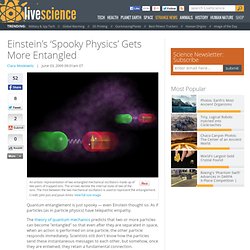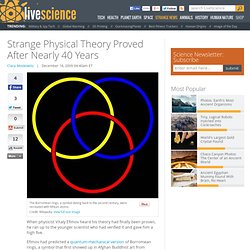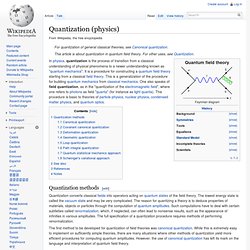

Non‐Newtonian Properties of Relativistic Fluids. Light Bends Matter, Surprising Scientists. Light can twist matter, according to a new study that observed ribbons of nanoparticles twisting in response to light.

Scientists knew matter can cause light to bend – prisms and glasses prove this easily enough. But the reverse phenomenon was not shown to occur until recently. The researchers assembled strings of nanoparticles, which are tiny clumps of matter on the scale of nanometers (one nanometer is one billionth of a meter). In a darkened lab, the scientists linked nanoparticles together into ribbons. At first the nano ribbons were flat, but when a light was shone on them, they curled up into spirals. The discovery was so novel, the researchers were skeptical of their own results at first. "I didn't believe it at the beginning," said lead researcher Nicholas Kotov, an engineer at the University of Michigan. Exotic Antimatter Created on Earth. Scientists have created a never-before seen type of exotic matter that is thought to have been present at the earliest stages of the universe, right after the Big Bang.

The new matter is a particularly weird form of antimatter, which is like a mirror-image of regular matter. Every normal particle is thought to have an antimatter partner, and if the two come into contact, they annihilate. The recent feat of matter-tinkering was accomplished by smashing charged gold atoms at each other at super-high speeds in a particle accelerator called the Relativistic Heavy Ion Collider at the U.S. Department of Energy? S (DOE) Brookhaven National Laboratory in Upton, N.Y. Among the many particles that resulted from this crash were bizarre objects called anti-hypertritons.
If all that is a little much to straighten out, just think of anti-hypertritons as several kinds of weird. "This is the first time they? These particles weren't around for too long, though ? Einstein’s ‘Spooky Physics’ Gets More Entangled. Quantum entanglement is just spooky — even Einstein thought so.

As if particles (as in particle physics) have telepathic empathy. The theory of quantum mechanics predicts that two or more particles can become "entangled" so that even after they are separated in space, when an action is performed on one particle, the other particle responds immediately. Scientists still don't know how the particles send these instantaneous messages to each other, but somehow, once they are entwined, they retain a fundamental connection.
This bizarre idea riled Einstein so much he called it "spooky action at a distance. " A new study found that this eerie quantum link can apply even to situations that resemble the larger, everyday world. Previous experiments have entangled the internal properties of particles, such as spin states, but this is the first time scientists have entangled the particles' pattern of motion. As for why this entanglement, or any entanglement, is possible, physicists aren't so sure. Strange Physical Theory Proved After Nearly 40 Years. When physicist Vitaly Efimov heard his theory had finally been proven, he ran up to the younger scientist who had verified it and gave him a high five.

Efimov had predicted a quantum-mechanical version of Borromean rings, a symbol that first showed up in Afghan Buddhist art from around the second century. The symbol depicts three rings linked together; if any ring were removed, they would all come apart. Efimov theorized an analog to the rings using particles: Three particles (such as atoms or protons or even quarks) could be bound together in a stable state, even though any two of them could not bind without the third. The physicist first proposed the idea, based on a mathematical proof, in 1970. Since then, no one has been able to demonstrate the phenomenon in the lab — until recently.
Quantization (physics) The first method to be developed for quantization of field theories was canonical quantization.

While this is extremely easy to implement on sufficiently simple theories, there are many situations where other methods of quantization yield more efficient procedures for computing quantum amplitudes. However, the use of canonical quantization has left its mark on the language and interpretation of quantum field theory. The method does not apply to all possible actions (like for instance actions with a noncausal structure or actions with gauge "flows"). It starts with the classical algebra of all (smooth) functionals over the configuration space. This algebra is quotiented over by the ideal generated by the Euler–Lagrange equations.
-deformed in the same way as in canonical quantization. Actually, there is a way to quantize actions with gauge "flows". Main article: Weyl quantization. See Loop quantum gravity. See Uncertainty principle See Schwinger's quantum action principle. Quantum field theory.